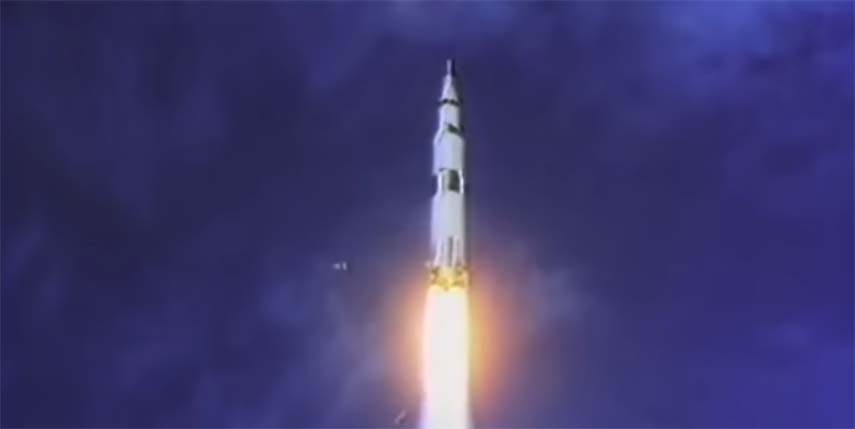3 … 2… 1 … we have a lift-off! Fifty years ago today (16 July 1969), three astronauts blasted off from the Kennedy Space Centre in Florida and became the first human beings to land on the moon and return home safely.
The Apollo 11 space vehicle was commanded by Neil Armstrong, with Michael Collins as command module pilot and Edwin (Buzz) Aldrin as lunar module pilot.
The Apollo 11 mission was the fifth manned space flight, and the third to the moon.
It came just nine years after US president John F Kennedy famously announced that the US would land a man on the moon before the end of the decade – a vision that became reality.
Following its launch, Apollo 11 began a three-day voyage to the moon.
The initial goal aimed to put the spacecraft into a 100-nautical mile circular Earth parking orbit.
About two-and-a-half hours later, the Saturn V launch stage three vehicle restarted to inject Apollo 11 into its translunar orbit.
Half an hour after this, the command/service module separated from the Saturn V third stage and was ejected into a lunar orbit. The Saturn V third stage, meanwhile, was sent into solar orbit.
About 21 hours after entering lunar orbit – first elliptical and then near-circular orbit – Armstrong and Aldrin manned the lunar module to prepare for their historic descent to the moon’s surface.
Behind the scenes
The primary objective for Apollo 11 was deceptively simple and straightforward: “Perform a manned lunar landing and return”. Accomplishing it, however, was far from easy.
Secondary objectives included understanding the performance of spacecraft, spacesuits, and the astronauts themselves on a lunar landing mission, setting up experiments on the lunar surface, and returning rock and soil samples for analysis by scientists.
Training was an issue: because of the limited availability of the vehicle, only Apollo Commanders used the single-seat Lunar Landing Training Vehicle (LLTV) as a training tool to simulate the LM’s flying characteristics in the final 200 feet of the descent to the surface.
Armstrong completed his training in mid-June with eight flights in LLTV-2, the only vehicle available at the time, at Ellington Air Force Base near the Manned Spacecraft Center (MSC), now the Johnson Space Centre in Houston. Backup Commander Lovell flew his first flight on June 30, with additional training missions in early July.
Lunar Module Pilots as well as Commanders used the Lunar Landing Research Facility (LLRF) at the NASA Langley Research Center in Virginia for training. Aldrin and Armstrong made several training runs in the LLRF at the end of June, in addition to sessions they had completed earlier in their training program. Lovell and Haise had also practiced using the LLRF.
The Mission Control Center (MCC) located at MSC served as the focal point for monitoring all aspects of Apollo missions. MCC took over control of the flight from KSC as soon as the Saturn V rocket cleared the launch tower, and continued in that role until after splashdown.
In the Pacific Ocean, preparations continued to support the return of the Apollo 11 astronauts from the Moon. The USS Hornet (CVA-12) was designated as the Prime Recovery Ship for Apollo 11 and loaded upwith NASA equipment required for the recovery, as well as equipment to support the television crews that reported on the splashdown from aboard the ship.
These included a General Electric-provided satellite antenna to allow live broadcast of the splashdown and recovery operations, and three trailers for ABC News, selected as the pool network to provide the color TV feed to the other networks.
With all the attention focused on Apollo 11, NASA was also busy preparing for future lunar missions. In case Apollo 11 was not successful at accomplishing the first Moon landing in July 1969, NASA was prepared to try again with Apollo 12 in September, and if that proved unsuccessful as well, with Apollo 13 in December.
Therefore, ground teams were preparing spacecraft and launch vehicles with those launch dates in mind. After Apollo 11’s success, the schedule and the pace of processing were relaxed somewhat. The Apollo 12 prime crew of Charles “Pete” Conrad, Alan Bean, and Richard Gordon and their backups David Scott, James Irwin, and Alfred Worden participated in vacuum chamber tests of their CM and LM in the Manned Spacecraft Operations Building (MSOB) at KSC.

